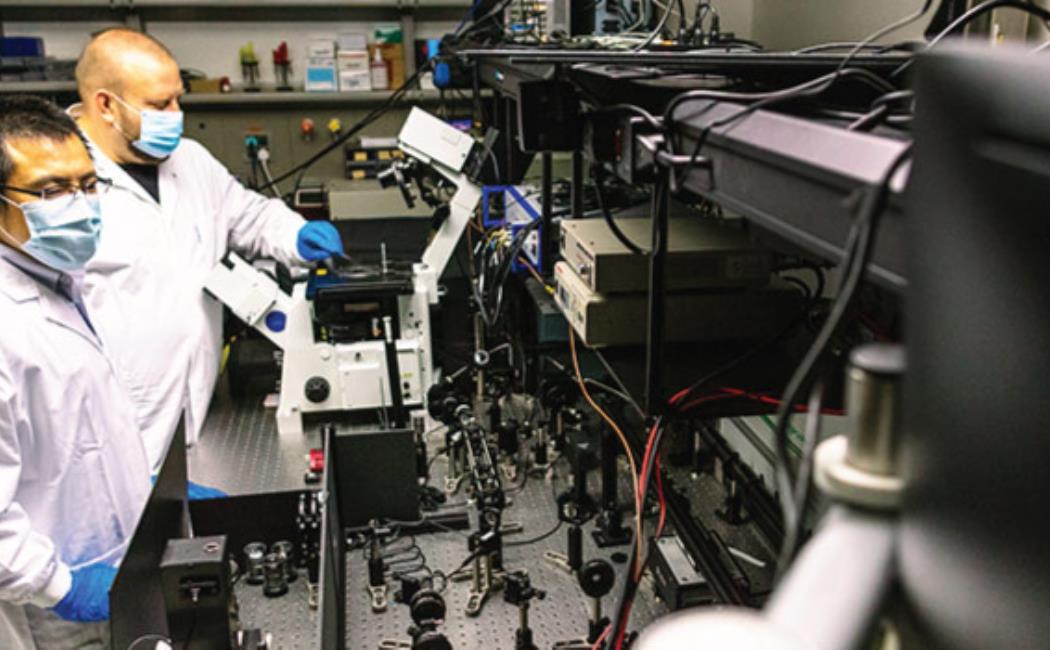
Ultrabright dots see beyond skin deep
16 February, 2021
A polymer that is custom designed to produce light that penetrates murky environments has shown promise in bioimaging trials, where it can detect nano-sized particles underneath the surface of realistic tissue models.
Recent studies have demonstrated that fluorescent probes, which are light-emitting materials that attach to tiny targets such as cells, are particularly useful for bioimaging when they radiate in the shortwave infrared (SWIR) region of the optical spectrum. Because this type of fluorescent light penetrates deeper into biological objects without being absorbed or scattered, SWIR probes can be spotted farther into tissue than conventional emitters. These features have enabled SWIR probes to capture high-resolution images of structures located deep within the body, such as brain tissue, without the hazards of x-rays.
Click here to read the full story.
Image: KAUST researchers are developing technology to improve high-resolution bioimaging of structures and tissues located deep within the body.
© 2021 KAUST; Anastasia Serin